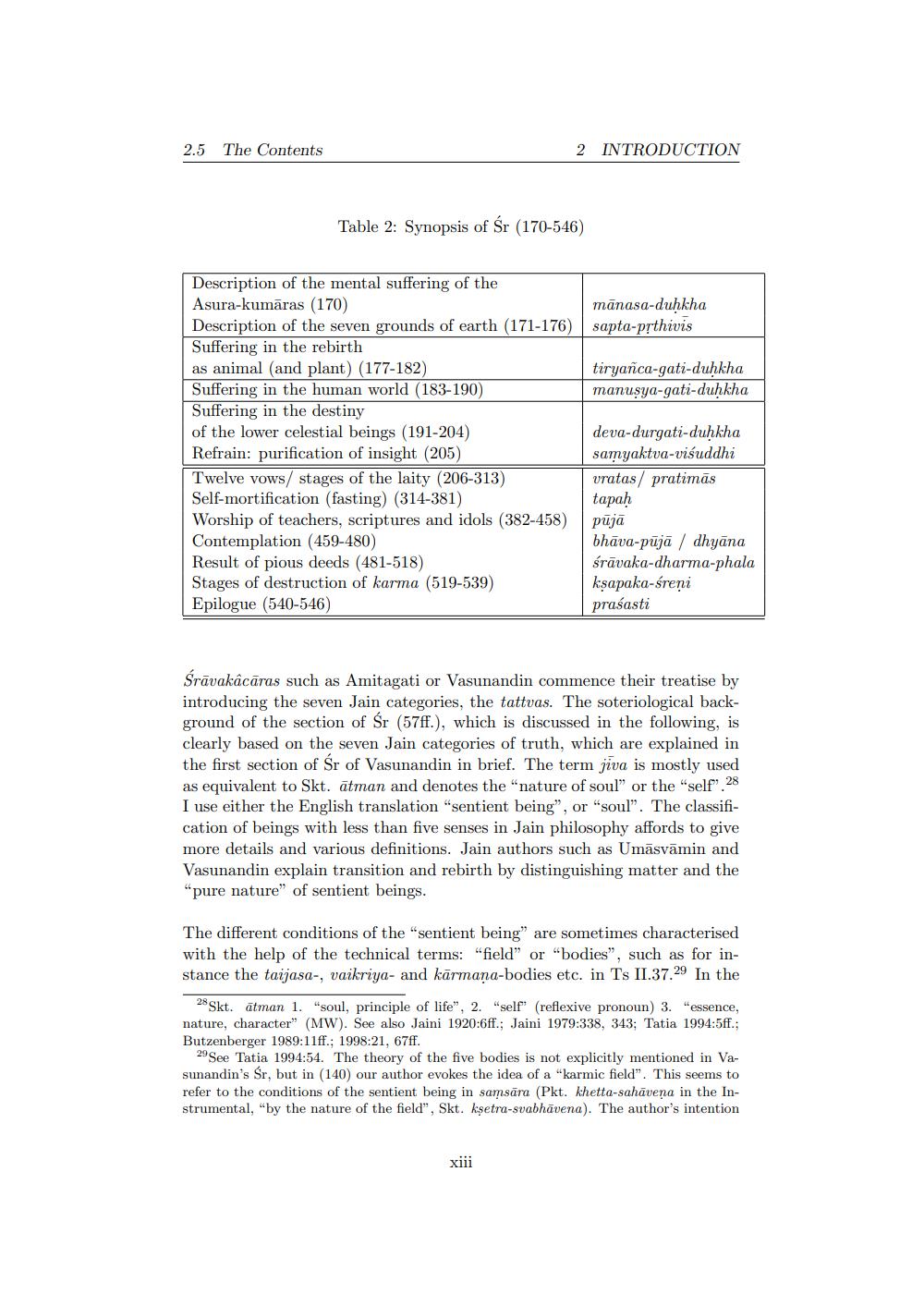________________
2.5
The Contents
2 INTRODUCTION
Table 2: Synopsis of Sr (170-546)
manasa-duhkha sapta-prthivis
tiryanca-gati-duhkha manusya-gati-duḥkha
Description of the mental suffering of the Asura-kumāras (170) Description of the seven grounds of earth (171-176) Suffering in the rebirth as animal (and plant) (177-182) Suffering in the human world (183-190) Suffering in the destiny of the lower celestial beings (191-204) Refrain: purification of insight (205) Twelve vows/ stages of the laity (206-313) Self-mortification (fasting) (314-381) Worship of teachers, scriptures and idols (382-458) Contemplation (459-480) Result of pious deeds (481-518) Stages of destruction of karma (519-539) Epilogue (540-546)
deva-durgati-duhkha samyaktva-visuddhi vratas/ pratimās tapaḥ pājā bhāva-puja / dhyāna śrāvaka-dharma-phala ksapaka-śreņi prasasti
Srāvakācāras such as Amitagati or Vasunandin commence their treatise by introducing the seven Jain categories, the tattvas. The soteriological background of the section of Sr (57ff.), which is discussed in the following, is clearly based on the seven Jain categories of truth, which are explained in the first section of Sr of Vasunandin in brief. The term jiva is mostly used as equivalent to Skt. ātman and denotes the “nature of soul" or the "self" 28 I use either the English translation "sentient being", or "soul". The classification of beings with less than five senses in Jain philosophy affords to give more details and various definitions. Jain authors such as Umāsvāmin and Vasunandin explain transition and rebirth by distinguishing matter and the "pure nature" of sentient beings.
The different conditions of the "sentient being" are sometimes characterised with the help of the technical terms: "field" or "bodies", such as for instance the taijasa-, vaikriya- and kārmana-bodies etc. in Ts II.37.29 In the
28Skt. ātman 1. "soul, principle of life", 2. "self" (reflexive pronoun) 3. "essence, nature, character" (MW). See also Jaini 1920:6ff.; Jaini 1979:338, 343; Tatia 1994:5ff.; Butzenberger 1989:11ff.; 1998:21, 67ff.
24See Tatia 1994:54. The theory of the five bodies is not explicitly mentioned in Vasunandin's Sr, but in (140) our author evokes the idea of a "karmic field". This seems to refer to the conditions of the sentient being in samsāra (Pkt. khetta-sahāvena in the Instrumental, "by the nature of the field", Skt. kşetra-svabhāvena). The author's intention
xiii




